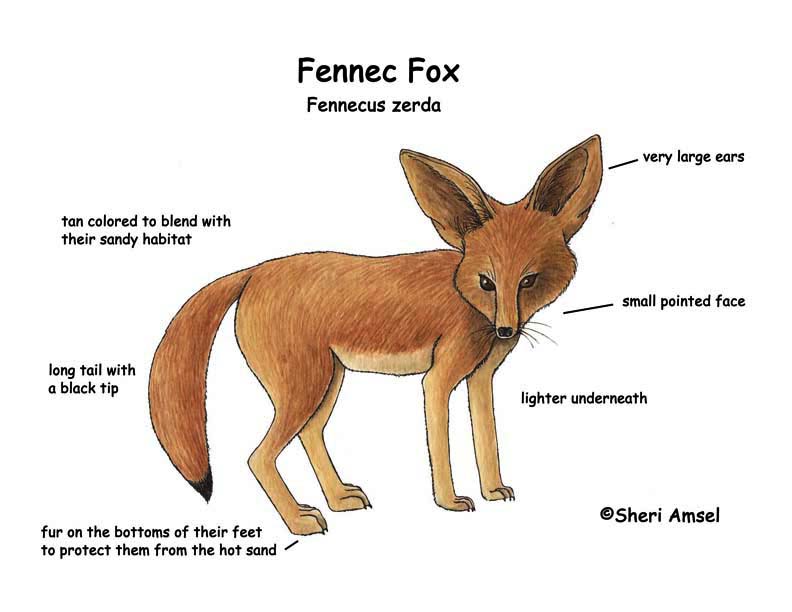

They are found in the Sahara desert of North Africa.
They live in the desert.
They are the smallest fox in the world. Including their tail foot-long tail, they are only 2.5 feet long. They are tan colored to blend with their sandy habitat. They have very large ears that help cool them. They do this at night when the air is cold and blood circulating through the ears is cooled by the night air. They have fur on the bottoms of their feet to protect them from the hot sand.
They are mostly active at night (nocturnal). During the day they rest in burrows, which they share with other fennecs. Males mark their territories with urine.
They eat both plants and small animals (omnivorous), like; rodents, birds eggs, reptiles and insects. They don’t need to drink water to survive as they get enough moisture in the things they eat.
They are hunted by snakes, hyena, jackal, desert cats and big birds of prey.
Females are pregnant for about 7 weeks and have 2-5 young.
They can live up to 10 years in the wild, usually less. Their conservation status is unknown.
Kingdom: Animalia
Phylum: Chordata
Subphylum: Vertebrata
Class: Mammalia
Order: Carnivora
Suborder: Caniformia
Family: Canidae
Genus: Vulpes
Species: Vulpes zerda
When you research information you must cite the reference. Citing for websites is different from citing from books, magazines and periodicals. The style of citing shown here is from the MLA Style Citations (Modern Language Association).
When citing a WEBSITE the general format is as follows.
Author Last Name, First Name(s). "Title: Subtitle of Part of Web Page, if appropriate." Title: Subtitle: Section of Page if appropriate. Sponsoring/Publishing Agency, If Given. Additional significant descriptive information. Date of Electronic Publication or other Date, such as Last Updated. Day Month Year of access < URL >.
Amsel, Sheri. "Fox (Fennec)" Exploring Nature Educational Resource ©2005-2024. December 14, 2024
< http://mail.exploringnature.org/db/view/431 >

